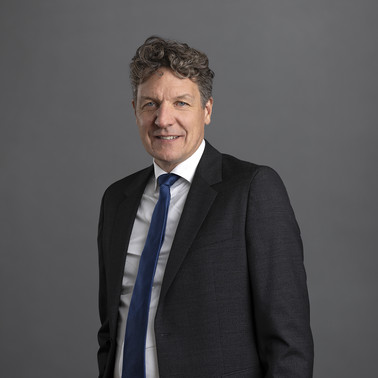Amendments to the new EU VBER – has the EU regulator taken the right approach?
EU's newly revised Vertical Block Exemption Regulation of 10 May 2022 (the "VBER") is a much-desired update to the 2010 VBER. Alongside with the Commission guidelines the VBER gives valuable guidance in relation to topics like e-commerce vs. traditional retail (brick and mortar-shops), the permissibility of price parity clauses and information sharing arrangements. But does the Commission's view on passive sales risk the efficiency of exclusive distribution systems? Probably not, but there are some worrying signs.
The VBER maintains the well-known distinction between restrictions on active and passive sales, whereby a distributor that has been granted an exclusive sales territory or customer group is restricted from pursuing active sales into the exclusive territory and/or to the exclusive customer group allocated to another distributor. For example, if Distributor A has an exclusive territory in Norway and Distributor B has an exclusive territory in Finland, Distributor A is restricted from actively selling to Finland and Distributor B is restricted from actively selling to Norway. However, a distributor’s passive sales outside its allocated exclusive territory or customer group cannot lawfully be restricted and covered by the block exemption.
Under the VBER and the VBER guidelines, participation in a public procurement is regarded as passive selling irrespective of procedure used (e.g. open procedure, restricted procedure or other). The Commission's view is that the classification of participation in public procurements as passive sales is coherent with the objectives of the public procurement legislation. Under the VBER and the VBER guidelines, participation in private procurement processes is also seen as passive selling.
Is the Commission correct in classifying participation in procurement processes, whether public or private, as passive? In our experience, participation in procurements often requires activity from a supplier. What may appear as a response to an unsolicited request from a tendering authority is in fact often the end result of months or years of work of actively promoting and presenting a product to preparing a competitive bid.
Being involved in public procurement processes require active steps to be taken by a potential supplier. Obviously, a supplier must look out for, observe and have active subscriptions to tendering tools allowing them to be informed of relevant tenders and it must sign up for retrieving requests for quote. They must also submit several qualification documents and a bid satisfying what is often a great number of requirements. In essence, the bidder in question must actively seek to become and remain involved in a public procurement process. The larger and more complex the tender process is, the more work will it take.
Likewise, from the tendering authority's perspective there are in our experience few cases when an invitation to tender can be regarded as unsolicited. An invitation to tender is almost always preceded by months of preparatory work and dialogue, and often in consultation with potential bidders, trade associations etc. The only time a tendering process can be regarded as unsolicited is perhaps when the value of the procurement is low enough to not be subject to open competition.
Participation in private procurement is visibly not subject to the same amount of detailed rules as public procurement, but in in our experience, few suppliers can kick back and relax and wait for the buyer to come to them with unsolicited requests (at least if the supplier wants to be successful in its bid). So, the characterization of procurement, whether public or private, as passive selling may be slightly misleading, at least as a general rule. But without getting stuck in semantics – what does this mean for the players in the market?
The characterization of procurement as passive sales means that a distributor that has been allocated an exclusive territory or customer group for its sales are now, arguably, free to expand its business activities beyond that territory or that customer group as long as the expansion is made in a procurement context. This means, other things being equal, that the value of being an exclusive distributor decreases as one cannot be sure to escape intra-brand competition (which, of course, is the whole point of being allocated an exclusive territory) but might also be said to increase as the distributor is allowed certain activities beyond its allocated territory. From the perspective of the brand owner, we deem that it might not be as appealing to set up an exclusive distribution system since its exclusive distributors will be less likely to want to invest in marketing, etc. in their respective territories.
So why is the Commission decreasing the value of exclusivity agreements? Unfortunately, both the VBER and the Guidelines on vertical restraints are silent on the matter. But if we allow ourselves to speculate, we can identify at least two reasons for this change.
First, an exclusivity agreement is a restriction on competition in itself as it limits both the supplier's and the distributor's possibilities to sell the products where they want and to whoever they want. Restrictions of this kind may lead to more effective markets and higher competitive pressure and have therefore been allowed under the VBER. That said, the main objective of public procurement law is to open up for competition. Allowing competitive restraints of this kind could therefore arguably be contrary to the objectives of procurement legislation as it could restrict bidders from entering the public domain to conduct their business. It seems that the Commission values free and open competition in the public domain higher than exclusive distributors' possibilities to promote a certain brand within a certain territory, and thereby forget the fact that exclusivity agreements may be a prerequisite for a certain brand to exist on a certain territory.
Second, the Commission might deem that this view change will not in fact lead to any practical decrease in the number of exclusivity agreements. This may be true. In our experience, to a large extent, procurements still remain national (or even regional) in nature. The tendering authority always wants as much competition as possible, but in many cases, it seems difficult to attract bidders from other countries. Bidders may in some cases lack the proper organization and knowledge about national laws which makes it difficult to enter a market in another country. So, even if the revised view on passive selling encourages competition from other territories, it is far from certain that this will be the case.
Finally, we believe that territorial restrictions and customer group allocations are worth protecting as restrictions of that kind give distributors incentives to invest time and money in developing the most efficient methods of selling the product in their allocated territory or to their allocated customer group. Allowing distributors to compete outside their allocated territory or sell to another customer group, albeit only in the context of private or public procurements, will not be consistent with the very concept of exclusive distribution. With this in mind, it is crucial that suppliers and distributors consider this when reviewing whether their old distribution agreements meet the new requirements or when entering into new distribution agreements.







